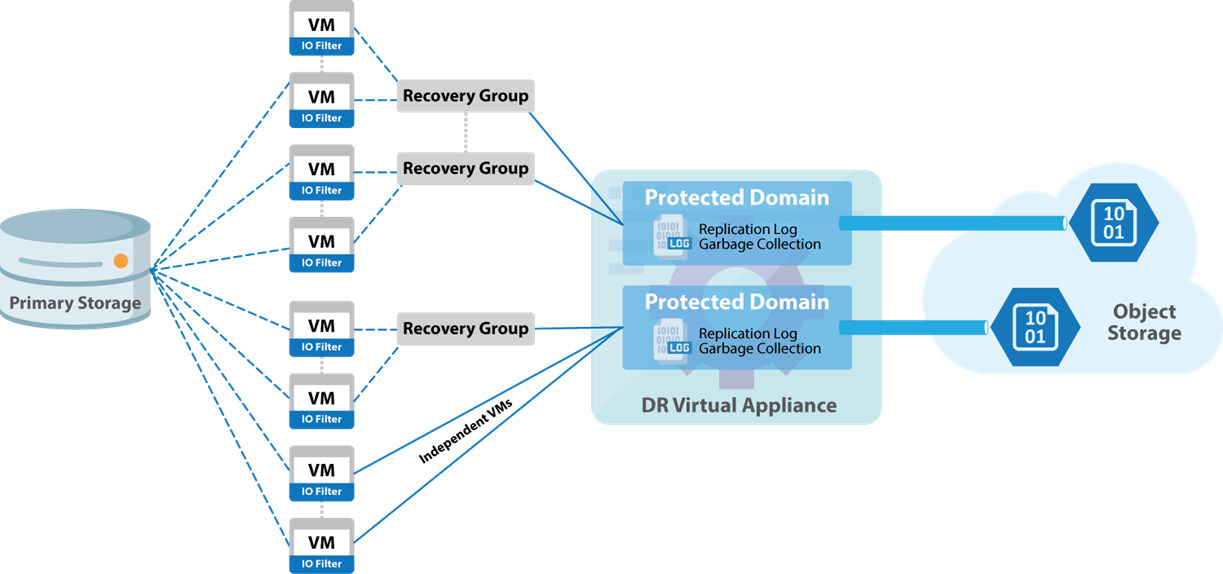Architecture

This diagram illustrates the relationships among VMs, protected domains, and DRVAs. As noted previously, each protected VM has an IO Filter attached to it, to capture data as it is written to primary storage. Groups of VMs can be protected together in a single protected domain.
Multiple protected domains, each with their own replication log (for replication log and garbage collection metadata) can be maintained under a single DRVA. Each protected domain replicates all its data to a discrete bucket in the object store.
In configuring VM protection, the administrator may want to consider when it is helpful to protect multiple VMs in the same protected domain, and when it is helpful to establish multiple separate protected domains. For example:
- The protected domain is the most granular level of protection. If one VM within a protected domain needs to failover, all the VMs in the domain must failover.
- Certain applications and databases are best protected together. If all nodes in an application cluster failover, they can be recovered with consistency if they are all in the same protected domain.
- Some applications with large amounts of data may be best protected in a single-VM domain.
- Each protected domain has its own replication log, and multiple replication logs can share the same LUN or replication log volume. If the replication log requirements of protected domains change, JetStream DR can automatically allocate space appropriately for each domain.